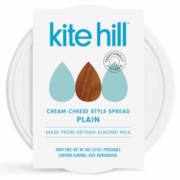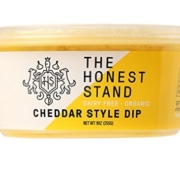Delicious and Healthy-ish gluten free muffins you will love. I recommend Bob's Red Mill Flour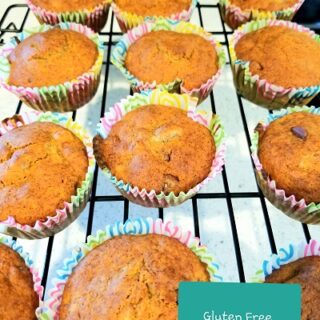
Gluten Free Chocolate Chip Banana Muffins
Ingredients
Instructions
Notes
If you prefer not to use NuNaturals Maple Flavored Syrup, increase the maple syrup by 1 tablespoon instead. I find it plenty sweet either way.
You can find both of these items on Amazon, at Sprouts (certain locations) and Thrive Market.Nutrition Information:
Yield: 12
Serving Size: 1
Amount Per Serving:
Calories: 242Total Fat: 13gSaturated Fat: 10gTrans Fat: 0gUnsaturated Fat: 2gCholesterol: 16mgSodium: 134mgCarbohydrates: 30gFiber: 2gSugar: 14gProtein: 3g
Tag Archive for: health coach
Are you ready to be part of the growing plant based foods movement? If you haven’t tried these 6 plant based dips and toppings, we recommend giving these a try. I keep a few on hand for last minute guests.
Love dip, but don’t love the dairy or eggs that are often in them? Dig into these velvety plant-based spreads, sauces and schmears made without animal products.
Kite Hill Plain Cream Cheese Style Spread
Use this almond-based spread as a vegan base for dip recipes that call for cream cheese, such as spinach-artichoke dip. Made with cultures, salt and vinegar, Kite Hill’s version is tangy, smooth and fantastic for bagels and cooking alike.
The Honest Stand Cheddar Style Dip
Who knew? When they’re blended, potatoes, carrots, onions and cashews transform into a creamy, low-calorie dip that’s a dead-ringer for cheese sauce. Pour over cooked macaroni for a dairy-free meal, or heat and serve with mini pretzel bites for a cholesterol-free, ballpark-perfect nosh.
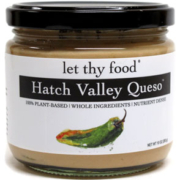 Let Thy Food Hatch Valley Queso
Let Thy Food Hatch Valley Queso
Ingredients like Hatch green chiles, lime juice, garlic and hickory smoke infuse this cashew-based sauce with Southwestern flavors. Scoop with tortilla chips, or drizzle this paleo-friendly sauce over burritos, tacos, beans and rice, and more.
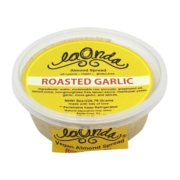 La Onda Almond Dip & Spread Roasted Garlic
La Onda Almond Dip & Spread Roasted Garlic
A goes-with-anything dip made with blended raw almonds, grapeseed oil, lemon juice, gluten-free tamari sauce, nutritional yeast, garlic and spices—that’s it! Swap in La Onda’s spread instead of mayo for a seriously delicious sandwich.
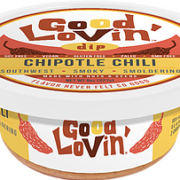 Good Lovin’ Dip Chipotle Chili
Good Lovin’ Dip Chipotle Chili
Tired of plain ol’ hummus? This thick vegan dip contains nuts and seeds such as almonds, cashews and pepitas to impart creamy texture and protein-dense nutrition. Nutritional yeast, coconut aminos, garlic and mushroom powder add umami flavor.
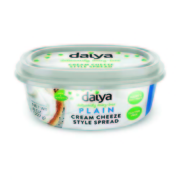 Daiya Strawberry Cream Cheeze Style Spread
Daiya Strawberry Cream Cheeze Style Spread
Place this slightly sweet, strawberry-flavored dip on the brunch table, and watch it disappear one fruit slice at a time. Like all Daiya’s products, this one is totally vegan and soy free, made with coconut oil, tapioca and potato starch, pea protein, non-GMO safflower oil, and more.
Author Credit: Jenna Blumenfeld
Art Credit: New Hope Network
This post (or portions of this post) was provided by New Hope Network. I am a member of the New Hope Influencer Co-op, a network of health and wellness bloggers committed to spreading more health to more people.
newhope.com newhopeinfluencers.com
DISCLAIMER–The views and opinions expressed here are based solely on personal experience, research and my interactions other professionals in the field of health and wellness. This article is not a diagnose, or medically based advise. Your experiences and sentiments may differ from my own. If you are suffering from any serious medical condition, you should consult your doctor or naturopath for a diagnosis.
We all know It’s important to drink water, but sometimes it could be hard to stay on top of it making it easy to become dehydrated. Let’s talk about combating dehydration.
The most common reasons I hear from clients are:
- Getting so busy you forget to drink enough.
- Not realizing you’re thirsty.
- Having a sore throat or mouth sores, making it uncomfortable to drink
- Being sick to your stomach
It’s natural to lose some water by sweating, breathing, urinating, and eliminating, and through tears. Under normal circumstances you will replace the lost liquid by drinking fluids and eating foods that contain water. If you lose too much water or don’t drink and eat enough, you will become dehydrated.
You can lose excessive amounts of water with:
- A fever
- Diarrhea
- Vomiting
- Excessive sweating
- Peeing a lot (Diabetes and some medications like water pills — also called diuretics — can make you pee more often.)
Symptoms of mild or moderate dehydration include:
- Number one- The first sign is – your body’s way of sending a gentle reminder your body that you are already dehydrated.
- Dry or sticky mouth
- Not urinating often enough
- Dark yellow urine
- Dry, cool skin
- Headache
- Muscle cramps
Signs of severe dehydration include:
- Not urinating at all, having very dark yellow output and pain/burning when trying to urinate.
- Very dry skin
- Feeling dizzy
- Rapid heartbeat
- Rapid breathing
- Sunken eyes
- Sleepiness, lack of energy, confusion or irritability
- Fainting
- Inability to have a bowel movement
Symptoms for babies and young children can be different than for adults:
- Dry mouth and tongue
- No tears when crying
- Dry diapers for 3 hours
- Sunken eyes, cheeks, soft spot on the top of the skull
- Sleepiness, lack of energy, or irritability
- Severe dehydration is a medical emergency and needs to be treated immediately.
Severe dehydration can cause permanent organ damage or even death!
Complications
Dehydration can lead to serious complications, including:
- Heat injury. If you don’t drink enough fluids when you’re exercising vigorously and perspiring heavily, you may end up with a heat injury, ranging in severity from mild heat cramps to heat exhaustion or potentially life-threatening heatstroke.
- Urinary and kidney problems. Prolonged or repeated bouts of dehydration can cause urinary tract infections, kidney stones and even kidney failure.
- Electrolytes — such as potassium and sodium — help carry electrical signals from cell to cell. If your electrolytes are out of balance, the normal electrical messages can become mixed up, which can lead to involuntary muscle contractions and sometimes to a loss of consciousness.
- Low blood volume shock (hypovolemic shock). This is one of the most serious, and sometimes life-threatening, complications of dehydration. It occurs when low blood volume causes a drop in blood pressure and a drop in the amount of oxygen
Let’s talk about solutions-
Especially in cold weather, the last thing I want to do is drink a glass of cold water. Even at room temperature, it is not all that appealing. I tend to lean toward warm drinks like tea or coffee. Hydrating right? Well, sort of. The hot liquid is fine and dandy but not if it’s laden with caffeine, which is a diuretic causing mild to moderate dehydration. The good news- there are tons of caffeine free teas and coffee blends to fill your cup.
How about those hot toddies to get you toasty? Well, you may feel toasty in more ways than one, but these alcohol-based drinks also dehydrate you.
Don’t disown the toddy just yet- for a dehydration proof version, keep the hot water, honey, lemon, and steep chamomile tea into the mix, and lose the booze.
During the warmer months, infused waters are a refreshing way to stay hydrated. They are a delicious alternative to plain water, beautiful in a glass or other clear dispenser and can be made with super healthy ingredients. These beverages are simple and inexpensive to make and are a lovely presentation for guests.
Infused water recipes-Click to check out our delicious water infusions.
Last but by no means least, smoothies. Don’t discount the healing powers of the freshly made smoothie. Not only can you get a quick hydration boost, it’s a quick and easy way to grab a meal or in between meal power boost on the go.
Check out these smoothie recipes 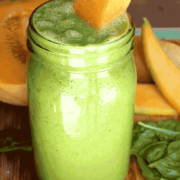
DISCLAIMER–The views and opinions expressed here are based solely on personal experience, research and my interactions other professionals in the field of health and wellness. This article is not a diagnose, or medically based advise. Your experiences and sentiments may differ from my own. If you are suffering from any serious medical condition, you should consult your doctor or naturopath for a diagnosis.
Learn more from the resources gathered here:
https://www.mayoclinic.org/diseases-conditions/dehydration/symptoms-causes/syc-20354086
https://www.webmd.com/a-to-z-guides/dehydration-adults#1
https://kidshealth.org/en/parents/dehydration.html
(CNN) The red meat or white meat debate is a draw. Eating white meat, such as poultry, will have an identical effect on your cholesterol level as eating red beef, new research indicates.
‘Bad’ cholesterol can lead to heart disease
By Susan Scutti, CNN
Updated 3:24 PM ET, Tue June 4, 2019
As consumers and health advocates, being even more diligent about what we buy into and what we share is so important. For many reasons, “fake news” is a growing trend. This article is an eye opener and well worth a read!
Just how factually accurate are most health articles you come across? You might be savvy enough to sort Goop from the Mayo Clinic, but when it comes to traditional news outlets. You might also be surprised to learn how much false information is really out there.
Health Feedback, a bipartisan network of scientists, collectively assess the credibility of health media coverage, worked together with the Credibility Coalition to examine the 100 most popular health articles of 2018–specifically, those with the highest number of social media engagements. They studied stories from numerous well-known websites, such as Time, NPR, the Huffington Post, Daily Mail, New Scientist, CNN, and more. Link to read the full article

